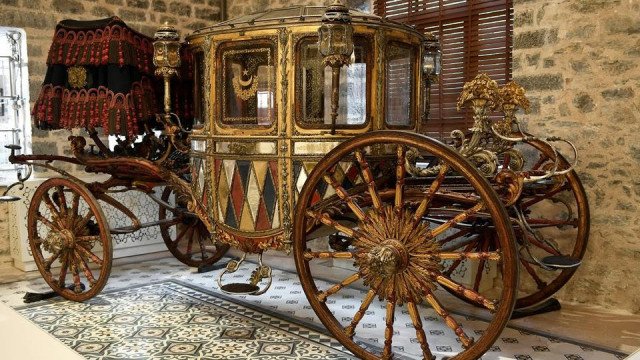The Baikos Museum of Glass and Crystals is located in a beautiful wooded area in the Asian part of Istanbul in a former stable, turned into a beautiful green botanical garden, recently opened.
The National Palaces Directorate explains that the museum is named after the Imperial Glass and Crystal Factory in Beykoz, established in the same area during the Ottoman period. The building that houses the museum was built by Ibrahim Pasha, who originally held the post of “ketyudah” – a steward hired by the Ottoman governors to manage their official affairs in Istanbul. He was later appointed vizier with the rank of pasha by Sultan Abdulaziz (1861-1876).
Ibrahim Pasha owned the largest and most important forested property on the shores of the Bosphorus. There he built mansions, gazebos, swimming pools and stables on 29.7 hectares of land. He also planted many plants and trees found within and outside the Ottoman Empire, turning it into a kind of botanical garden.
During the reign of Sultan Abdulhamid II (1876-1909) the property of Ibrahim Pasha was bought by the state and became available to the Ottoman public under the name “Garden of Freedom”. After a complex restoration, some of the buildings have now been turned into a glass museum by the presidency’s National Palaces Directorate.
The manager of the museum, Yassin Yildiz, gave information about the works exhibited in the museum. The oldest artifact in the glass collection, discovered during excavations of the Kubadabad Palace, built by the Seljuk Sultan Alaeddin Keikubad I, is the 13th-century Kubadabad slab. It was opened in 1966 and its 154 pieces have been carefully reconstructed and glued.
Visitors may be surprised to find that the predecessor of the Molotov cocktail is also in the Museum of Glass and Crystals of Beykoz, dating from the reign of Sultan Suleiman I (1520-1566). There are examples of glass hand grenades filled with gunpowder used as ammunition in wars dating back to the 16th and 17th centuries. Humbara, a type of glass hand grenade, was “first used during the siege of Rhodes in 1522.”
There is a darkened room dedicated to the stained glass windows. In another salon you can see the glass oil lamps dating from the 16th century, which Sokolu Mehmed Pasha ordered for the mosques he built.
Vases of glass tulips, created for the Ottoman court, are ahead of their time, because at that time tulips did not spread in Europe and were kept in the Ottoman Empire.
The museum also has filigree Venetian glass with white or colored threads originating from Murano. It is of great importance, as it is believed to have inspired the famous striped blue-and-white glass jewelry of the “nightingale’s eye” (çeşm-i bülbül) of the Ottomans, whose production began in 1847.
Another unique item that is sure to surprise visitors is a crystal piano made by Gaveau (Paris) and a crystal chair made by Kamenicky Senov (Bohemia).
“The museum also houses the ceremonial carriage made in Paris for Sultan Mahmut II. This unique vehicle is a world example in the use of crystals as lavish ornaments on it.
“We also have very important finds from the excavations during the railway tunnel under the Bosphorus – Marmarai. In the museum we also see samples of glass objects ordered in Europe for the Ottoman palaces in the 19th century,” concluded Governor Yildiz.









